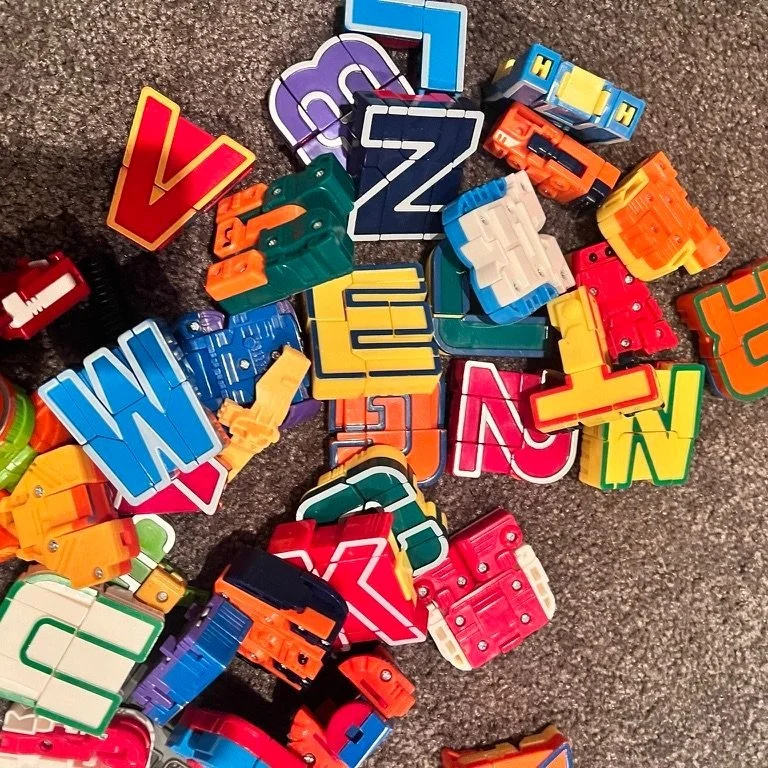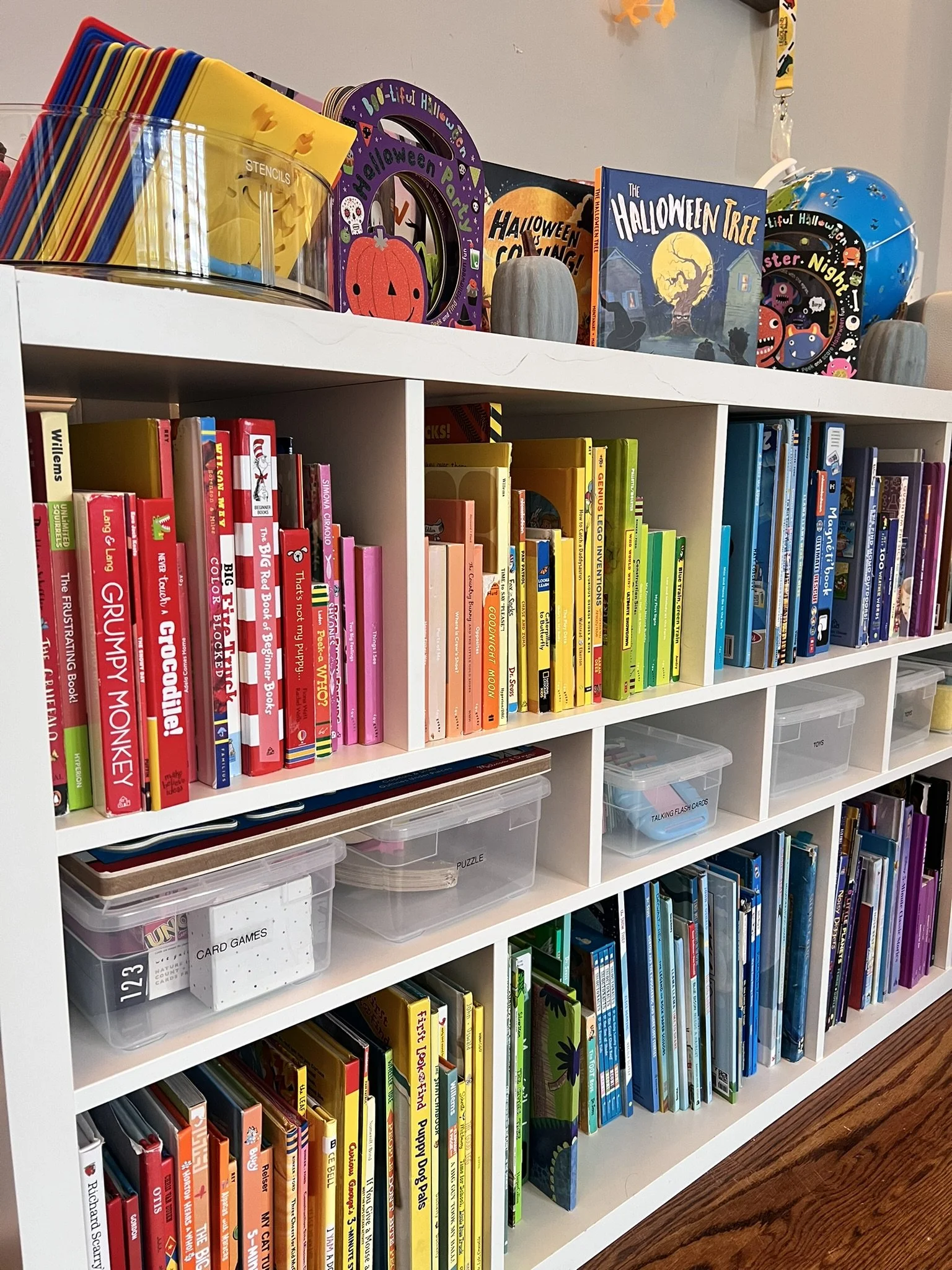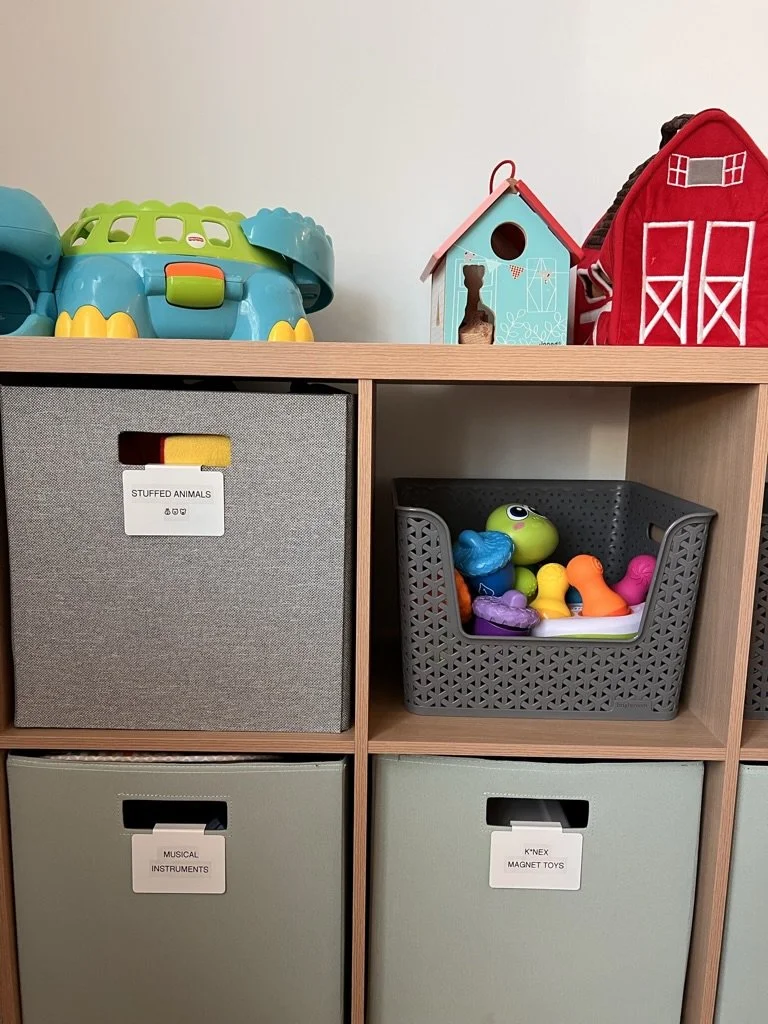Playroom Organization
Tips for Decluttering, Kid-Friendly Systems, and Making Cleanup Fun
A playroom is meant to be a space for creativity, imagination, and fun, but it can quickly turn into a chaotic mess if it's not well-organized. From toys scattered everywhere to art supplies spilling over, clutter can make it hard for kids to focus on play and more challenging for parents to keep the space tidy. The key to a well-functioning playroom is creating an environment that’s organized, accessible, and easy to maintain.
In this post, we’ll share simple yet effective tips for organizing a playroom, including decluttering strategies, using bins and baskets, kid-friendly storage systems, and making cleanup a fun activity.
Declutter First: Let Go of Unused Toys and Items
Before diving into organizing, it's essential to declutter the playroom by removing toys and items that no longer serve your family. Too many things can make the space feel overwhelming, and your child will not only struggle to find what they’re looking for, but they will also not enjoy being in the space. With toys, less is more. Fewer toys lead to more creative play. Here’s how to start the decluttering process:
Take Inventory: Go through each toy, book, and game. Ask yourself, “Does my child still play with this?” or “Is this broken or missing pieces?” If the toy is no longer loved or used, it's time to donate, sell, or toss it.
Create Keep, Donate, and Toss Piles: Set up three distinct piles or boxes: one for items to keep, one for donate, and one for tossing things. This helps to visually separate the items you want to keep from the ones you no longer need.
Keep It Age-Appropriate: Sometimes, kids grow out of certain toys faster than we realize. If your child has outgrown a toy or game, store it for younger siblings, donate it, or pass it on to friends and family.
Decluttering not only frees up valuable space but also helps kids focus on the toys and activities they enjoy.
Bins & Baskets: The Secret to Toy Storage
When organizing a playroom, bins and baskets are a lifesaver. They allow you to store toys neatly while making them easy for your child to access. Here’s how to make the most of bins and baskets in your playroom:
Clear Plastic Bins: Clear bins are an excellent option because they allow you and your child to see what's inside. Label each bin with a picture or words to help your child identify the contents. For example, a bin labeled "Legos" or a picture of a puzzle piece makes it easy for kids to find and put away their toys.
Stackable Drawers: Use stackable bins or drawers to save space while keeping toys organized. This works incredibly well for smaller toys like action figures, dolls, or arts and crafts supplies. Ensure the bins are lightweight and easy for kids to open independently.
Use Baskets for Soft Items: Soft items like stuffed animals or plush toys can quickly pile up in the playroom. Store them in large, soft baskets or laundry hampers that are both functional and kid-friendly.
Toy Trunks or Chests: A large toy trunk or chest is great for storing larger toys, building blocks, or dress-up clothes. Choose one with a lid that your child can easily open and close, and keep it in an accessible spot for easy reach.
By using bins and baskets, you can create an organized system that encourages your kids to put away their toys, knowing exactly where each belongs.
Kid-Friendly Storage Systems: Let Them Help
One of the best ways to maintain an organized playroom is to implement storage systems that are accessible to kids. When kids can easily find and put away their toys, they’re more likely to keep things tidy. Here’s how to create a kid-friendly storage system:
Low Shelves: Invest in low shelving units or bookcases at your child’s height. This allows them to see and access their toys and books quickly. You can store books, puzzles, and art supplies on these shelves and teach your child to return items after they’re done playing.
Open Bins for Easy Access: Keep toy bins open (rather than closed-off cabinets) to make it easier for little ones to grab what they need. You can also arrange the toys to encourage them to choose a few things at a time instead of pulling everything out.
Label Everything: Label bins, shelves, and drawers with pictures or words so kids can recognize where everything belongs. For younger children, a picture of a car, dinosaur, or doll on a bin helps them know where to return each item.
Creating a system that’s easy for your child to use encourages independence and makes it more likely they’ll participate in keeping the playroom tidy.
Making Cleanup Fun: Turning Chores Into Games
Getting kids to clean up after playtime doesn’t have to be a struggle. When you make cleaning up a fun and interactive activity, kids are more likely to get involved and enjoy the process. Here are some ways to turn cleanup time into a game:
Set a Timer: Challenge your child to clean up within a set time limit, such as five minutes. You can race against the clock to see how many toys they can put away before the timer goes off. This adds an element of excitement and helps your child focus on the task at hand.
Play Music: Turn on upbeat music and have a mini dance party while cleaning up. You can even make a game by picking up toys to the beat of the music. If you stop the music, it’s time to freeze and finish cleaning!
Toy Sorting Game: If you have multiple toy bins, turn cleanup into a sorting game. Ask your child to help you separate toys by type or color as they put them away. For example, "Can you put all the cars in the blue bin?" This keeps kids engaged while organizing.
Reward System: You can set up a simple reward system to encourage cleaning up. For example, kids can earn a sticker or a few minutes of extra screen time after tidying the playroom. Rewards help motivate kids and make them feel accomplished after a successful cleanup.
By turning cleanup into a fun, interactive activity, kids will be more likely to take ownership of their playroom and maintain its organization.
A Playroom That Works for Everyone
An organized playroom keeps your home tidy and provides a more enjoyable space for your kids to play, learn, and grow. By decluttering, utilizing bins and baskets, creating kid-friendly storage systems, and making cleanup fun, you’ll create an environment that encourages independence and creativity.
Remember, the goal is to make the space practical and enjoyable for parents and kids. When everything has a designated spot, and cleaning up feels like part of the fun, your playroom will stay organized—and your family will enjoy it for years to come.



